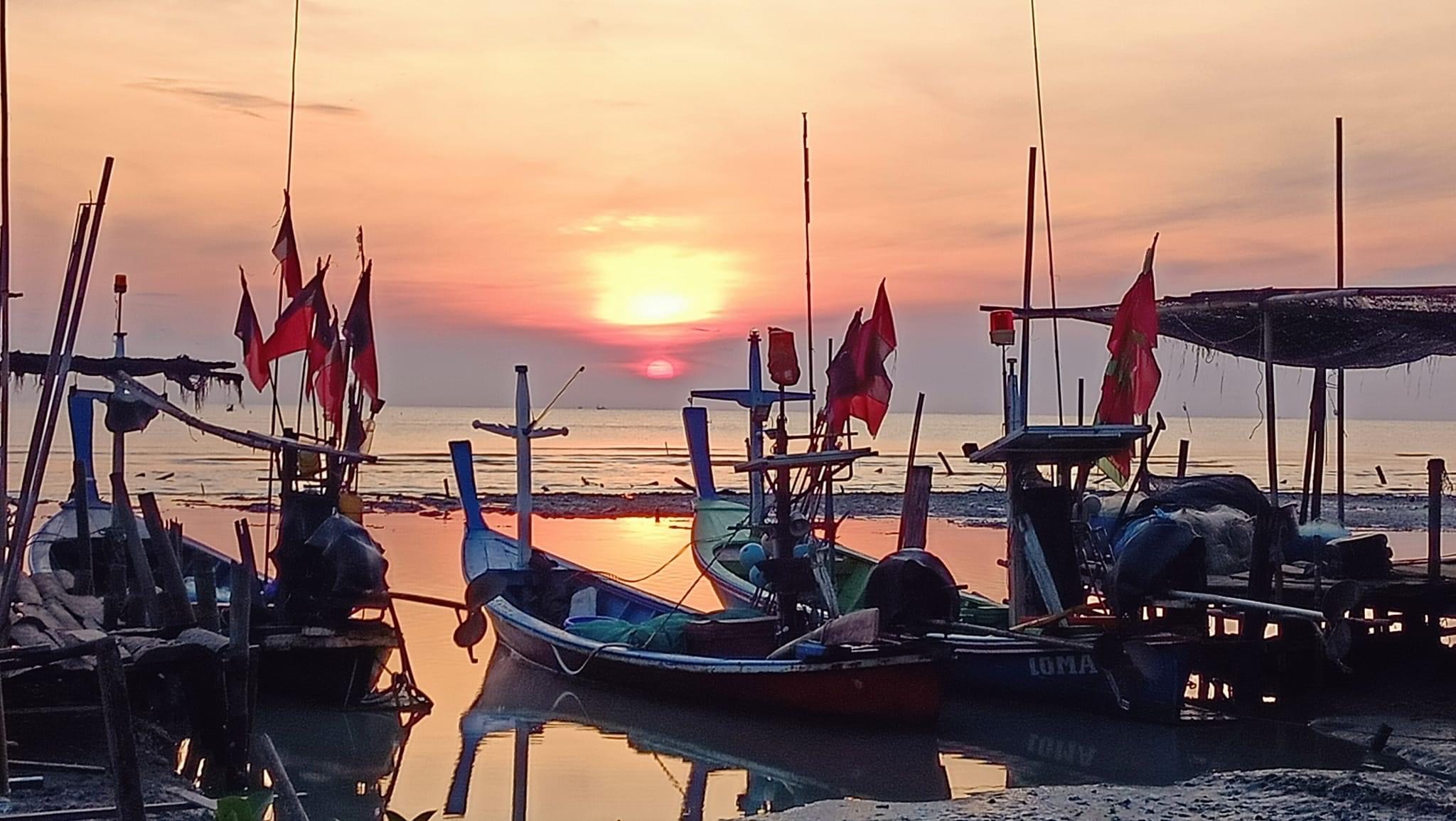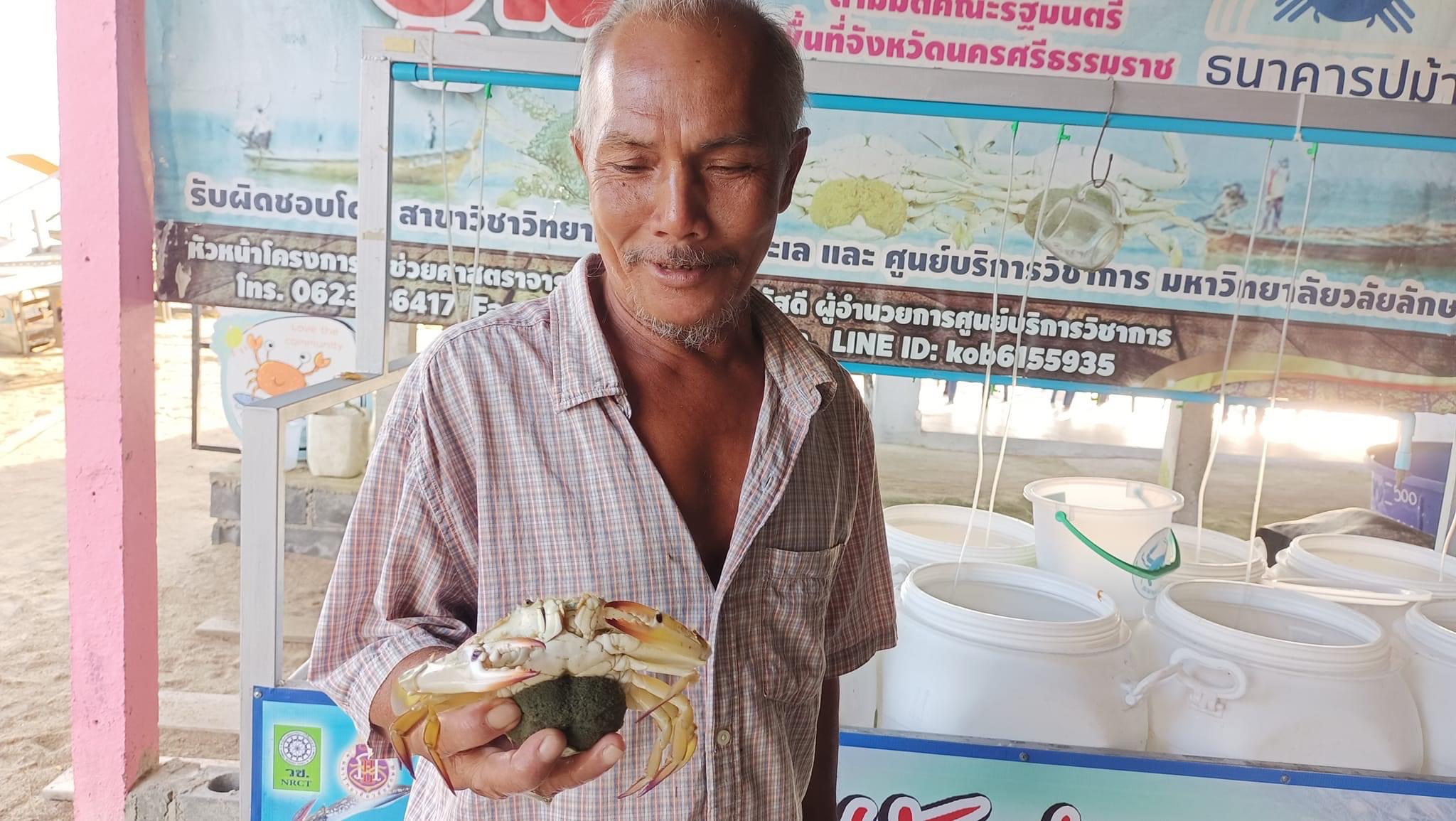Community-based Marine Protected Areas Fund
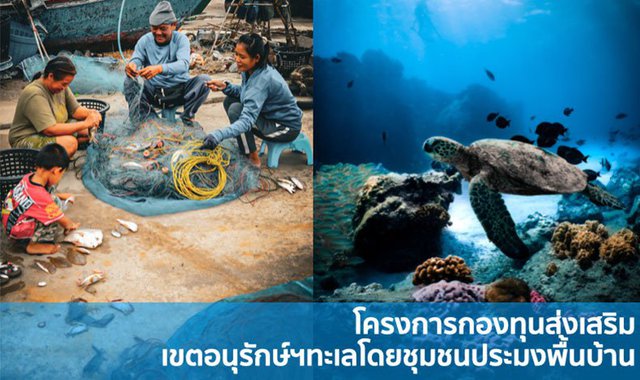
Let’s save our oceans by supporting fisherfolk communities as they work to become empowered protectors and caretakers of their surrounding seas. The goals of this program are to: 1. Bring back the ocean's health and beauty, 2. Deliver equitable access to seafood, and 3. Promote sustainable tourism.
Duration 27 Nov 22 to 31 May 24 Area Eastern and Southern coastal areas
Current donation amount
1,019,106 THBTarget
1,719,300 THBKampol is a fisherman from Paknam village in Satul province. A decade ago, his beach-front sea did not have any fish to catch any more, due to the destructive drag nets and illegal clam poaching – effectively like dragging rakes along the ocean’s floor, destroying all marine life in its path. Kampol and many other fisherfolk needed to take their small boats further and deeper into the sea, risking more injuries and death.
In the wake of this desperate challenge, he and his community started to learn how to create marine protected areas in front of their own beach, creating nature-based artificial reefs from coconut-palm leaf stalks, taking care of seagrass, and replanting mangrove forests. This effort strengthened homes for fish and served as a crab bank to re-establish the once barren bottom of the food chain.
Now, the sea around his village has recovered its former richness in biodiversity, fisherfolk’s catch is plentiful, and sustainable tourism activities under development. Kampol is just one of many examples of community leaders across the coastal villages that have successfully practiced marine conservation and sustainable fishery development. Along with other examples like Kan Kradai village in Prachuap Khiri Khan province, Naitung village in Nakornsrithammarat, Paknam village in Satul province has taken the role of watcher, caretaker and conservationist in their surrounding sea.
Even though the Thai ocean has been subjected to destruction continuously for decades, many more of these fisherfolk communities are capable of transforming themselves into protectors and caretakers of the sea. City people will also benefit from the oceanic recovery, not only from the beautiful seascape, but also in the access of safe seafood from the catches and productions by fisherfolk communities with sustainable fishery standards. These standards ensure that the seafood is not contaminated with hazardous chemicals such as Formalin (usually found in seafood from commercial fisheries to keep the artificial freshness). Amidst the global climate crisis, equitable access to quality seafood is also critical as a part of climate adaptation strategy.
Therefore, it is high time to create this Community-based Marine Protected Areas Fund in order to support at least 5 more villages to apply similar conservation and sustainable fishery methods in their own surrounding sea areas, directly addressing the UN SDG goal 14: Life Below Water in term of protected ocean areas, preventing illegal fishery and support small scale fishers. We believe the fund will grow into supporting hundreds of conservation-focused fisherfolk communities along Thailand’s coastal areas.
The challenge and a solution
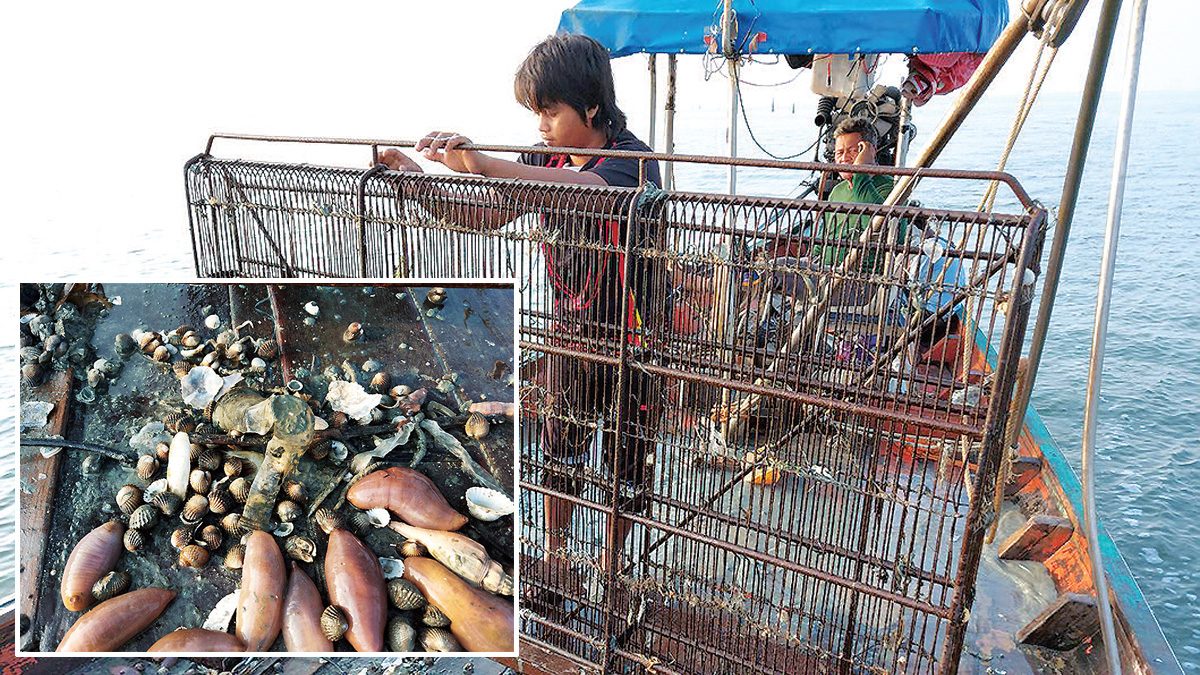
The Thai sea has been degrading with a significant decline of natural biodiversity from illegal fishing that destroyed sea floor areas – killing all marine life along its way. Commercial fishing also catches smaller fishes without differentiation resulting in the massive decline of fish stock. Irresponsible tourism operators drop anchors directly on reefs causing marine animals to lose their natural habitats. This negatively impacts the food security for millions of people living in coastal areas. Community-based fishery catches have declined 3 times in less than a decade according to government statistics.
The beauty and health of the Thai ocean will only be a thing of the past if nothing is done to halt and reverse this trend. Currently, the ocean health index of Thailand is 66 points, which is below a global average of 71 points. Furthermore, access to healthy seafood is affecting more than just people living next to the sea. A very large proportion of seafood from commercial fishing has chemical contamination, particularly the use of formalin to preserve the freshness of seafood sourced from deeper sea, creating a critical health risk among consumers worldwide.
However, there is a rising number of examples of how coastal communities are protecting the sea areas around their locations, particularly their beach fronts. Besides the use of artificial reefs to provide incubation and habitats for marine lives, communities are also declaring community-based marine protected areas with local government and fishery authority. Communities are issuing local regulations on sustainable fishery in their own areas, all while conserving and linking their sea areas with mangrove forest and sea grass areas. This diligent community work has resulted in the recovery of ocean health and beauty which, in turn, sustains community fishery stocks and sustainable tourism.
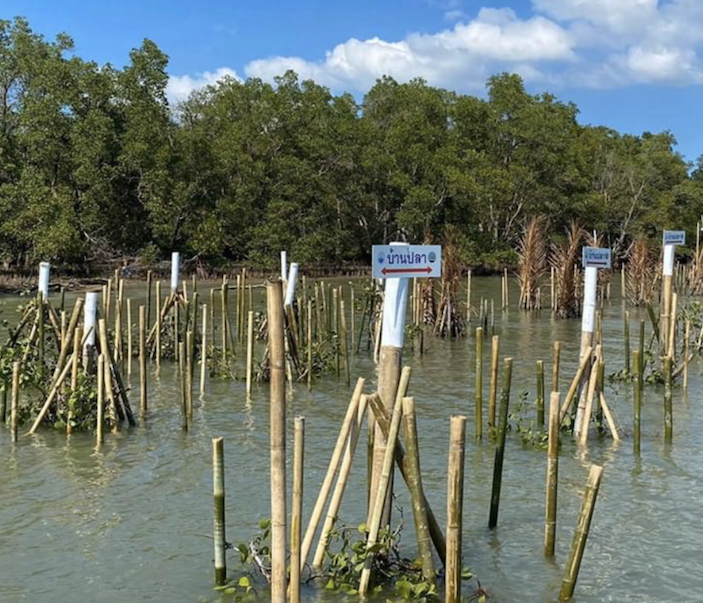
Fisherfolk community networks have successfully created community-based marine protected areas in many areas, such as;
Tar sa la, Nakornsrithammsarat province.
The fisherfolk community group here implemented local regulation on coastal and sea natural resource management with the local government. The regulation prevents illegal fishing gear and bans the use of all sea-floor rakes (mostly for clam poaching). The group is active in conservation and restoration efforts including; using nature-based artificial reefs, creating crab banks, as well as monitoring and stopping commercial fishing boats from entering the protected areas.
Baan Pak Nam, Satun province
In Satun, 7 local communities have come together to implement conservation-based sustainable fishery practices. They campaigned against destructive fishery equipment and created fish homes with artificial reefs. Additionally, they developed an MOU between communities, local government officials and fishery authorities, as well as local fishery companies to protect the surrounding sea areas by declaring fishery limits around the artificial reefs areas based on carrying capacity methodology.
The success of the effort not only improved the livelihood and natural resources, but also provided successful evidence for the local government to develop a medium and longer term plan with budget allocation to support the local ocean conservation efforts.
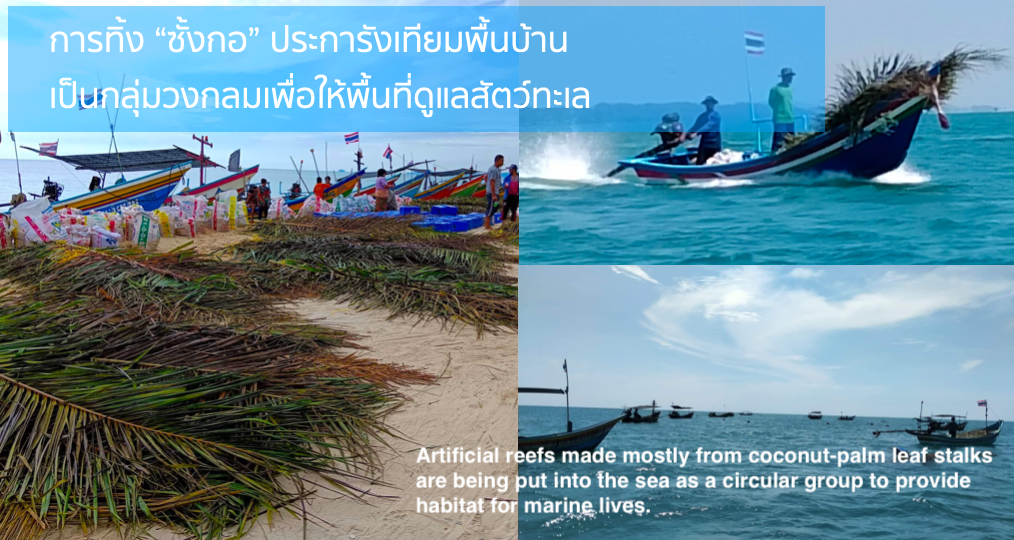
These examples and many more are clear evidence of how local fisherfolk communities are taking the role as protector and caretaker of the ocean, monitoring illegal and destructive fishing vessels and not allowing them to enter their protected areas. This movement directly addresses the global effort of protecting 30% of ocean areas as well. Therefore, the Thai Sea Watch Association, is serving as a key partner to many fisherfolk communities in their conservation and sustainable fishery efforts. Together they are developing the community-based marine protected areas fund to scale and spread such conservation models across the Thai coastal areas, with at least 5 more areas in 2023. The working list consists of Baan Lompune in Satun province, Baan Satang in Patalung province, Baan Kohloi in Nakornsrithammarat provinc, Baan Nature in Songkla province as well as Baan Tungnoi in Prachuap Khiri Khan Pprovince.
Project overall work plan:
1. Organize meetings and training for fisherfolk community groups on developing and managing community-based marine protected areas.
2. Collaboratively design local rules and regulations on common-pool natural resource management that aligns with local context and community knowledge and insights.
3. Organize community-based conservation efforts, particularly on marine animals, that fit with local landscape and community readiness.
4. Design communication conservation strategy and programs for local implementation.
5. Support economic activities around community-based sustainable fishery in the areas.
6. Develop partnership with local marine-focused academic institutions to support the communities with knowledge and ecological impact measurement processes.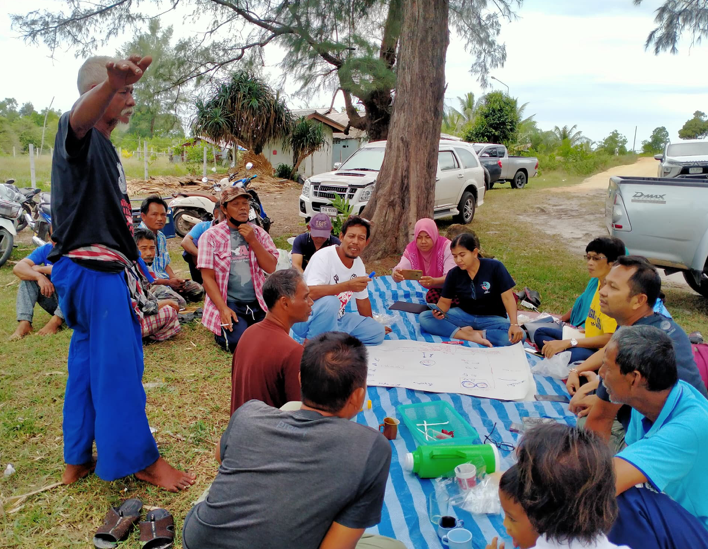
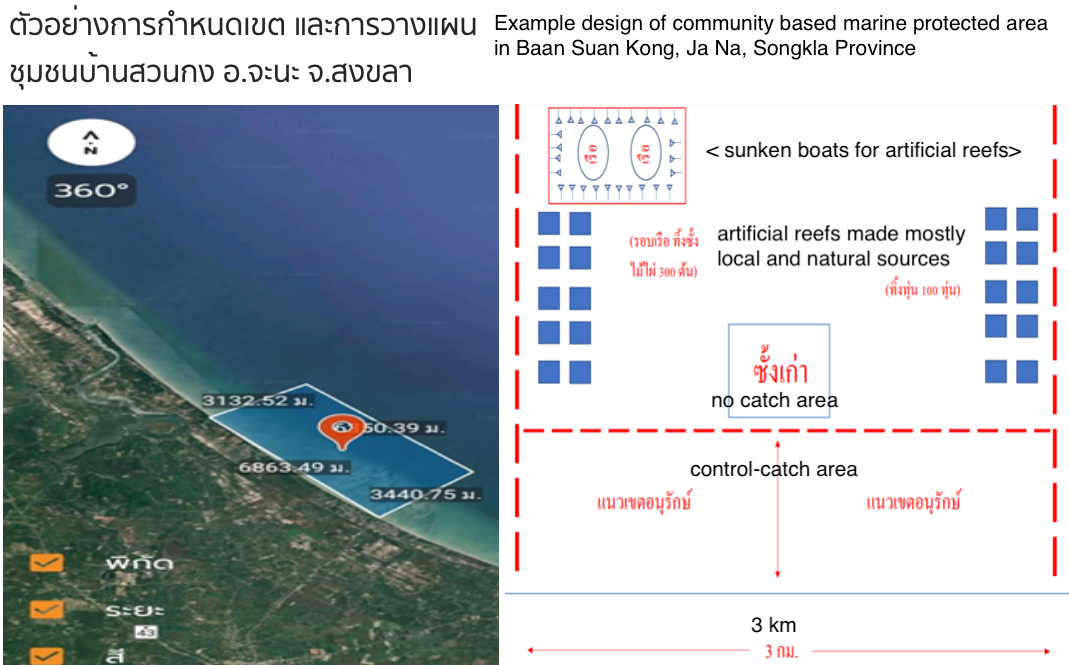
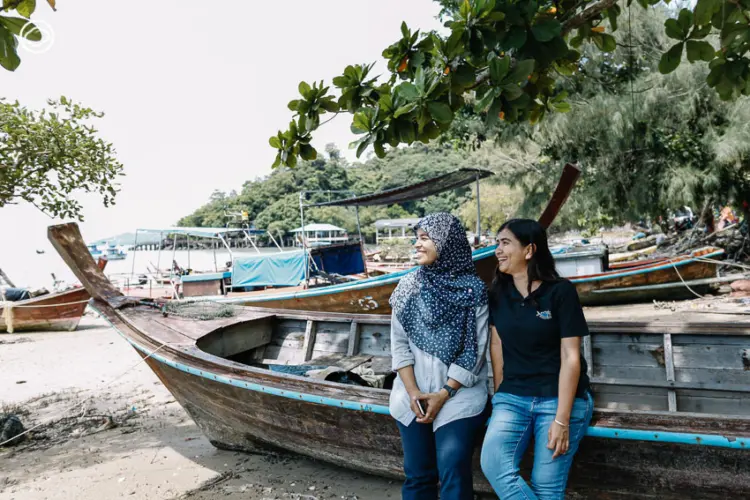
Expected outcomes
1. Increased number of community-based marine protected areas (cMPAs) at project sites. Fisherfolk communities are informed on conservation methods and processes as well as participate in the creation of cMPAs in their own areas. Each cMPA has key conservation activities such as artificial reefs development to provide incubators and shelters to marine lives, crab banks as well as context-specific activities such as managed mangrove forests and seagrass conservation sites. The cMPA capable of measuring its ecological impact, with key indicators compared to non protected areas (such as increase in biodiversity, volume and size of key species.) Key local rules/regulations are developed and issued in cMPAs.
2. Increased social impact indicators in participating fisherfolk communities such as: 20% increase in income and its distribution within a year, ability to fish mostly in their own surrounding areas without going out too far – reducing accident risk and increasing gender inclusivity. A stronger capacity by the community to organize their fishing and production practices with sustainable fishery methods, gear, and standards.
3. Consumers have more access to healthy and sustainably sourced seafood, without chemical contamination.
Project owner and partners
Thai Sea Watch Association, a non profit organization with the objectives of supporting fisherfolk communities self-organization, coastal-area marine conservation, local economic development of community-based fishery, research and campaign for sustainable fishery and related public policies, working with consumer groups and the public to spread the sustainable fishery and ocean conservation movement.
Facebook: https://facebook.com/thaiseawatch/
Website: https://www.raktalaethai.org/
Key partners
ChangeFusion, a non profit with the focus on social innovation and impact finance. Its role is on supporting the project on global best practice linkages between local and global fisherfolk-based marine conservation works and ocean conservation finance.
UNDP Thailand is supporting the project on impact measurement methodology in reporting the Sustainable Development Goals (SDG), particularly on SDG #14: Life under the sea, as well as biodiversity impact management.
Confederation of Thai Fisherfolk Associations which work together to promote and spread the practice of community based marine protected area along 300+ coastal fisherfolk communities.
Budget plan
| Number |
Items | Time |
Budget |
|---|---|---|---|
| 1 | Follow up meetings on implementation , 2 times for each site |
1 year |
264,000.00 |
| 2 | Support tools, equipments and other cost linked to local natural resource development process in each site under the cMPA (such as artificial reefs, floating protected area boundary signages, crab banks, etc.) on average 100,000 Baht per site x 5 sites |
1 year 500,000.00 |
|
| 3 | Compensation for advisory team , 2 persons , 18k Baht each |
1 year |
432,000.00 |
| 4 | Public communication campaigns for cMPAs |
1 year |
127,000.00 |
| 5 | Travel, communications, coordinations |
1 year |
120,000.00 |
| 6 | Project manager compensaton (10% of normal salary) 4000 Baht per month |
1 year |
48,000.00 |
| 7 | Process and ecosystem services + social impact monitoring |
1 ปี | 72,000.00 |

